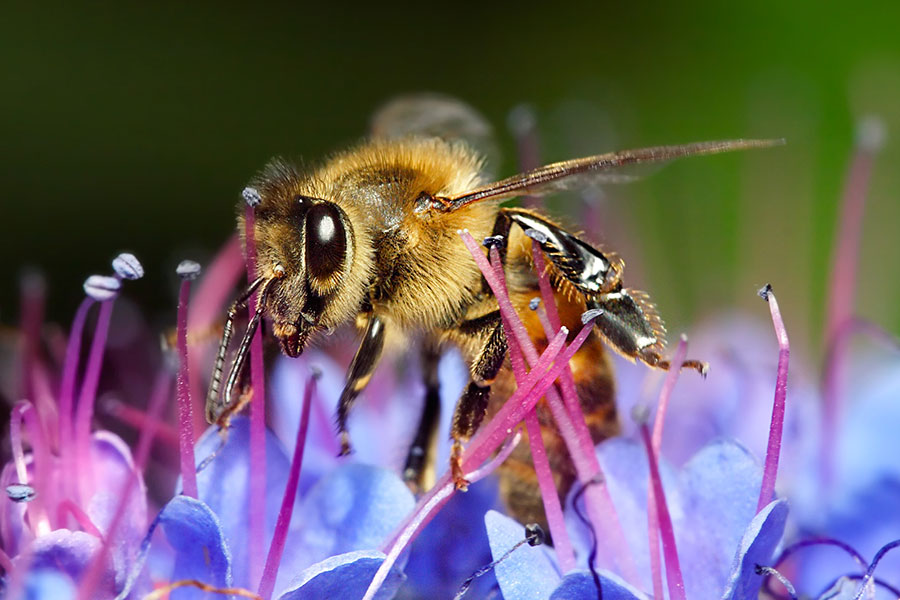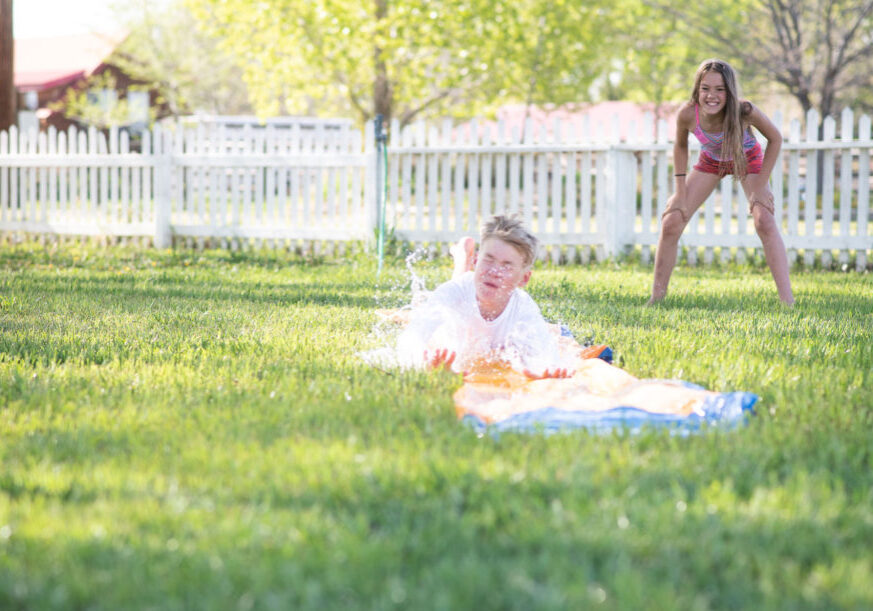Summer is a great time to adopt an important cause. The world honey bee population has been going down since 2006. Commercial food producers and people all over the world depend on honey bees to pollinate plants to grow food for humans and animals. Scientists are working hard to figure out why so many bees are dying. There appear to be multiple causes, including pesticide use, viruses, parasites, and an insufficient food supply.
In school, children learn that we are all responsible for the future sustainability of our ecosystem and our planet. Kids have the power to create awareness, educate others, and help re-establish endangered species.
What Kids Can Do Now
Learn about honey bees. Get some books from the library and research honey bees on the internet. Study pictures to be able to recognize honey bees and other bee species.
Look for honey bees in your yard and garden, at the park, or at camp. Take pictures without getting too close. You can enlarge the photos to get a closer look.
Appreciate bees while they are at work pollinating. Give them plenty of space and do not try to kill them.
Plant native flowers in gardens, public gardens, and flower pots. Honey bees are particularly attracted to purple, blue, white, and yellow flowers. Herbs, flowering fruit, and vegetable plants will also nourish honey bees. Plant clover and if possible leave a meadow area of uncut grass in your yard. Honey bees love clover.
Provide water for the honey bees to drink. They need to be able to stand near the edge of the water to drink or bathe. A shallow plastic dish of water with flat rocks in it will work. Honey bees will stand on the rocks to reach the water. Use a clear or light-colored bowl to keep the water from overheating.
Let clover grow in your yard along with grass. Do not kill it with pesticides. Pesticides kill beneficial plants and bugs, and they pollute the soil. Use organic weed killers such as vinegar.
Talk about bees. Spread the word about helping honey bees to other children. Share about honey bees at camp or school. Make a poster, project, or webpage to educate people.
Make fliers that help people learn about attracting honey bees by providing a habitat for them with flowers, plants, and accessible water. Tell people not to use pesticides. You can color the fliers by hand with crayons or markers, or use computer clip art. Post around town on bulletin boards (libraries, grocery stores, coffee shops). Mail fliers to your local and state government officials and to newspapers.
Visit a beekeeping farm to learn more about harvesting honey. Look in books and online for images of beekeeping. Maybe you will want to become a hobby beekeeper!
Buy local or U.S. made honey, rather than imported honey. Honey can be used in place of sugar in recipes – try baking with honey, yum!
Honey bees are our friends. We need them to pollinate our flowers, plants, and our nation’s food crops. Honey bees are very important to our environment and our planet.
Flowers & Plants That Attract Honey Bees
Asters • Basil • Bee Balm • Berries • Black-Eyed Susan • Chives • Clover • Cosmos • Cucumbers • Dandelions • Fennel • Flowering Broccoli • Geraniums • Hyacinth • Lavender • Lemon Balm • Lilacs • Marigolds • Melon • Mint • Peppers • Pumpkins • Rosemary • Sage • Snowdrops • Squash • Sunflower • Thyme • Tomatoes • Tulips • Wildflowers • Wisteria • Zinnia
DID YOU KNOW?
- A bee’s favorite colors are blue and yellow. Bees see yellow as blue.
- Flowers with “landing pads,” like spots (i.e., foxgloves) or rings (black-eyed Susans) are particularly designed for bees.
- Ashland, Phoenix, and Talent, our neighbors in Southern Oregon, have each elected to become a “Bee City USA” and Southern Oregon University has become the first “Bee Campus USA.”
CHILDREN’S BOOKS ABOUT HONEY BEES
- The Honey Makers by Gail Gibbons
- Honeybees by Joyce Milton
- Busy, Buzzy Bee by Karen Wallace
- The Life and Times of the Honeybee by Charles Micucci
WEBSITES ABOUT BEES
Posted in: Community, Science & Nature
Comment Policy: All viewpoints are welcome, but comments should remain relevant. Personal attacks, profanity, and aggressive behavior are not allowed. No spam, advertising, or promoting of products/services. Please, only use your real name and limit the amount of links submitted in your comment.






alexander says
some people are alergict tu bees